Now love yourself and enjoy this one ...
Cashew Alfredo Sauce Recipe – How to make the best easy, creamy garlic sauce that can be vegan, paleo, keto and dairy free friendly – with video.
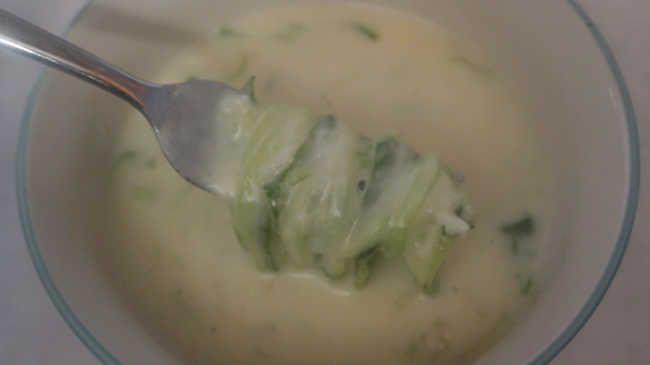
Cashew Alfredo Sauce
This cashew alfredo sauce recipe is incredibly versatile and can easily adapted to be either dairy free, vegan, paleo or keto friendly, depending on the exact ingredients you choose to use.
The creamy sauce has only a handful of ingredients and is perfect to serve with your choice of comforting pasta, cooked vegetables, spaghetti squash or zucchini noodles, depending on your dietary requirements.
Cashews are my favorite nut, so I love finding ways to incorporate the nutritious ingredient into meals instead of just wolfing them down by the handful.
Your taste buds won’t believe the nutty flavor and creamy base can be created with just these 4 simple ingredients, although feel free to adapt to make your own perfect version of the creamy, dreamy sauce to enjoy in comforting pasta meals.
Sauce Ingredients
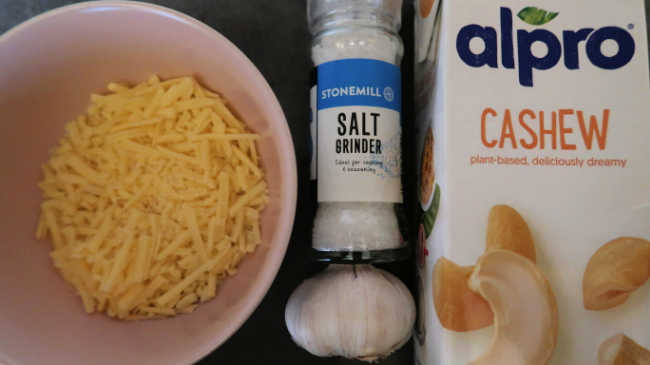
Here are the 4 key ingredients included in my version of a classic alfredo sauce recipe:
Cashew Milk – you can use store bought cashew milk or easily make your own by blending a third of a cup of raw cashews with three quarters of a cup of water, in a high-speed blender or food processor, until smooth and creamy, then simply use in the recipe as needed.
You can use soaked cashews in the blending process for an extra creamy sauce. You’ll find that when you soak cashews they become soft and easier to quickly blend, as well as digest when you consume the creamy pasta sauce.
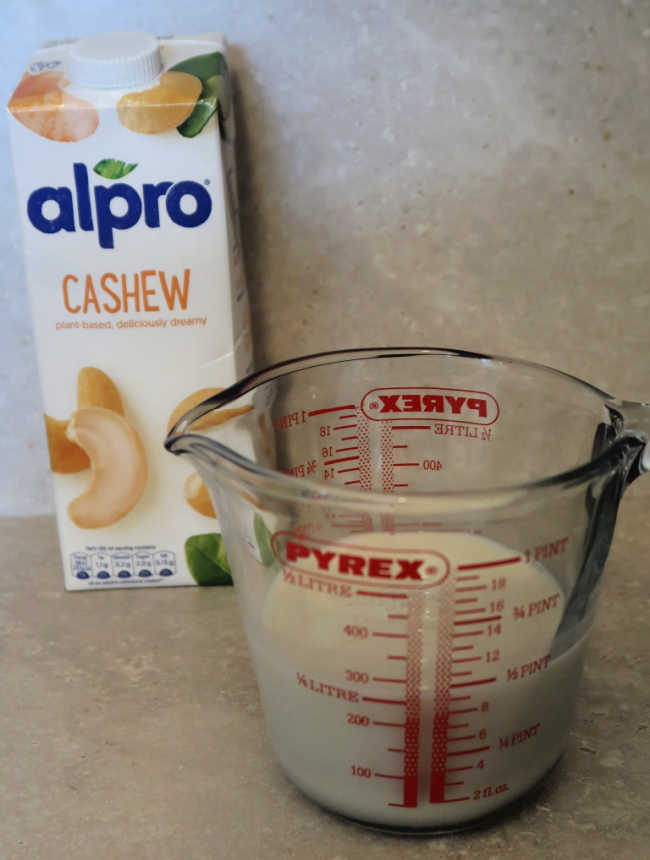
You can also feel free to swap some or all of the cashew milk for almond milk, coconut milk, soy milk or make an extra creamy texture by mixing in heavy cream, cashew cream or even sour cream.
It all depends on what you have in your kitchen and your dietary requirements. To make a vegan cashew alfredo sauce just be sure that the creamy ingredients are dairy free.
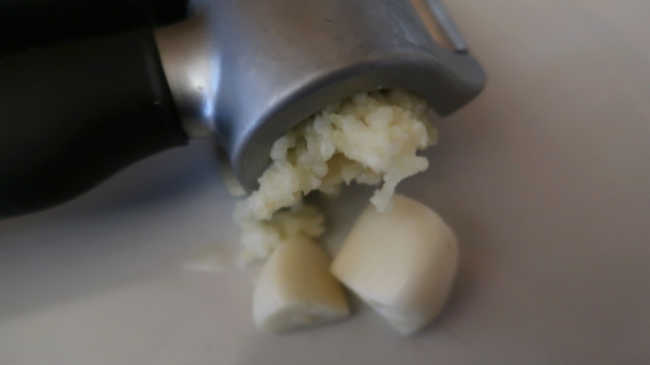
Garlic – to make a strong garlic alfredo sauce, simply use more garlic, which you can chop, grate or crush into the recipe.
Seasoning – include your seasoning of choice from sea salt, black pepper, red pepper flakes and you can also finish the dish with fresh parsley or your fresh herb of choice.
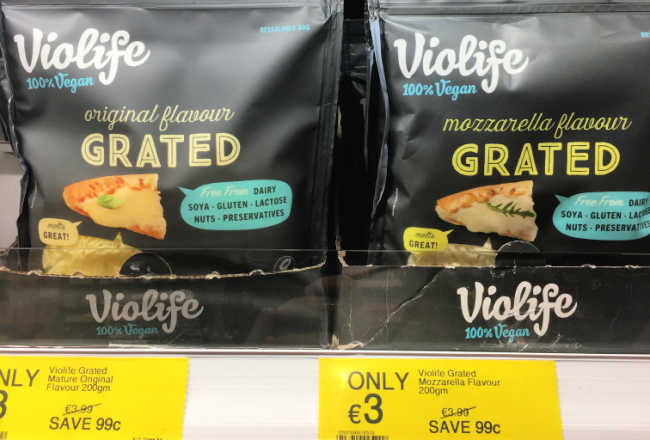
Cheese – use one to two cups of grated cheese in the recipe, just depends on how thick and cheesy you’d like the cream sauce to be.
To make a dairy-free alfredo sauce you can use vegan friendly cheese alternatives or nutritional yeast for a cheesy flavor without dairy.
More Ingredient Ideas
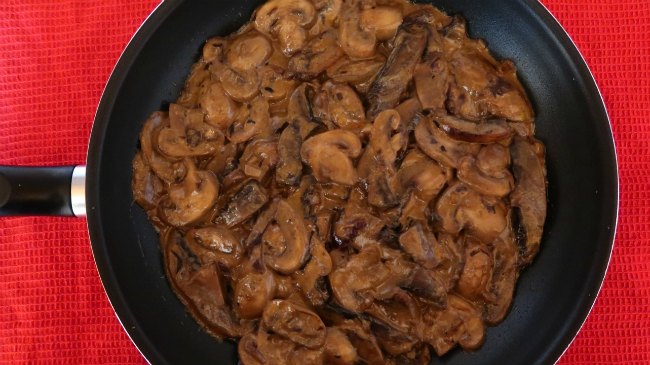
Here are more ideas for simple ingredients to include in your pasta sauce:
Lemon – add in lemon zest or a teaspoon lemon juice for a lemon flavored sauce.
Cauliflower – make a cauliflower alfredo sauce by adding in finely chopped or grated cauliflower.
Mushrooms – another veggie option is to mix sauteed mushrooms through the sauce.
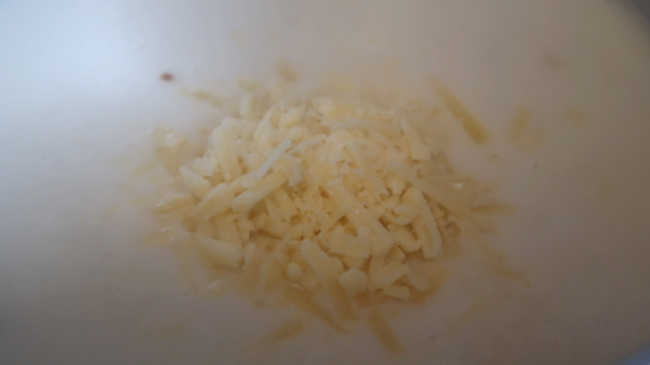
Parmesan Cheese – top the sauce with parmesan cheese, vegan parmesan or another dairy free alternative to mimic a traditional alfredo sauce.
Garlic Powder or Onion Powder – incorporate more flavor into your white sauce by using garlic or onion powder.
Arrowroot Or Corn Starch – thicken the sauce by stirring through a couple of spoons of arrowroot powder or corn starch.
Pasta Water – if making with pasta, you can save some of the pasta water to blend into the sauce if you’d like to adjust the consistency.
Cashews – top your bowl full of pasta with chopped cashews for added protein and a crunchy element.
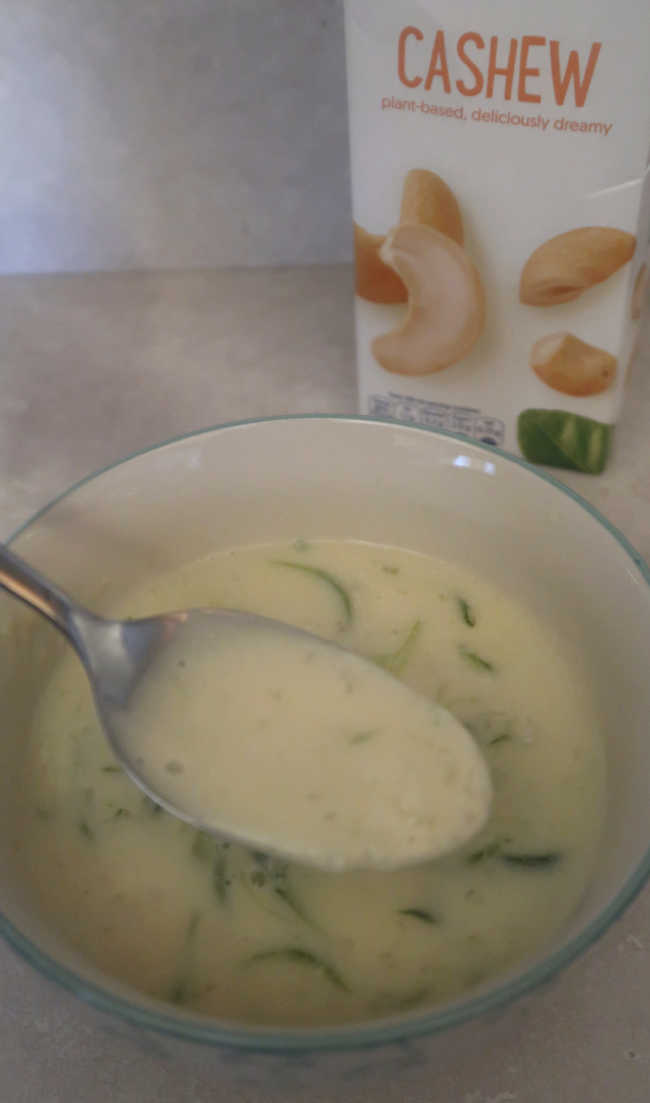
Cashew Alfredo Sauce Recipe
- 1 Cup Cashew Milk
- 1-3 Garlic Cloves, peeled and crushed
- Salt & Pepper, to taste
- 1-2 Cups Grated Cheese or a dairy free/vegan alternative
- Make homemade cashew milk, if using, or measure out a cup of cashew milk for use in the recipe.
- Heat olive oil, coconut oil or vegan butter in a large pot on the stove top over medium-high heat, when hot add in the crushed garlic.
- Saute for a minute or two to become fragrant, then pour over the cashew milk, salt and pepper, to taste.
- Bring up to the boil, then reduce to a simmer, add the cheese and cook until the cheese has melted and sauce has thickened to your liking.
- Serve with your favorite pasta, vegetables or zucchini noodles.
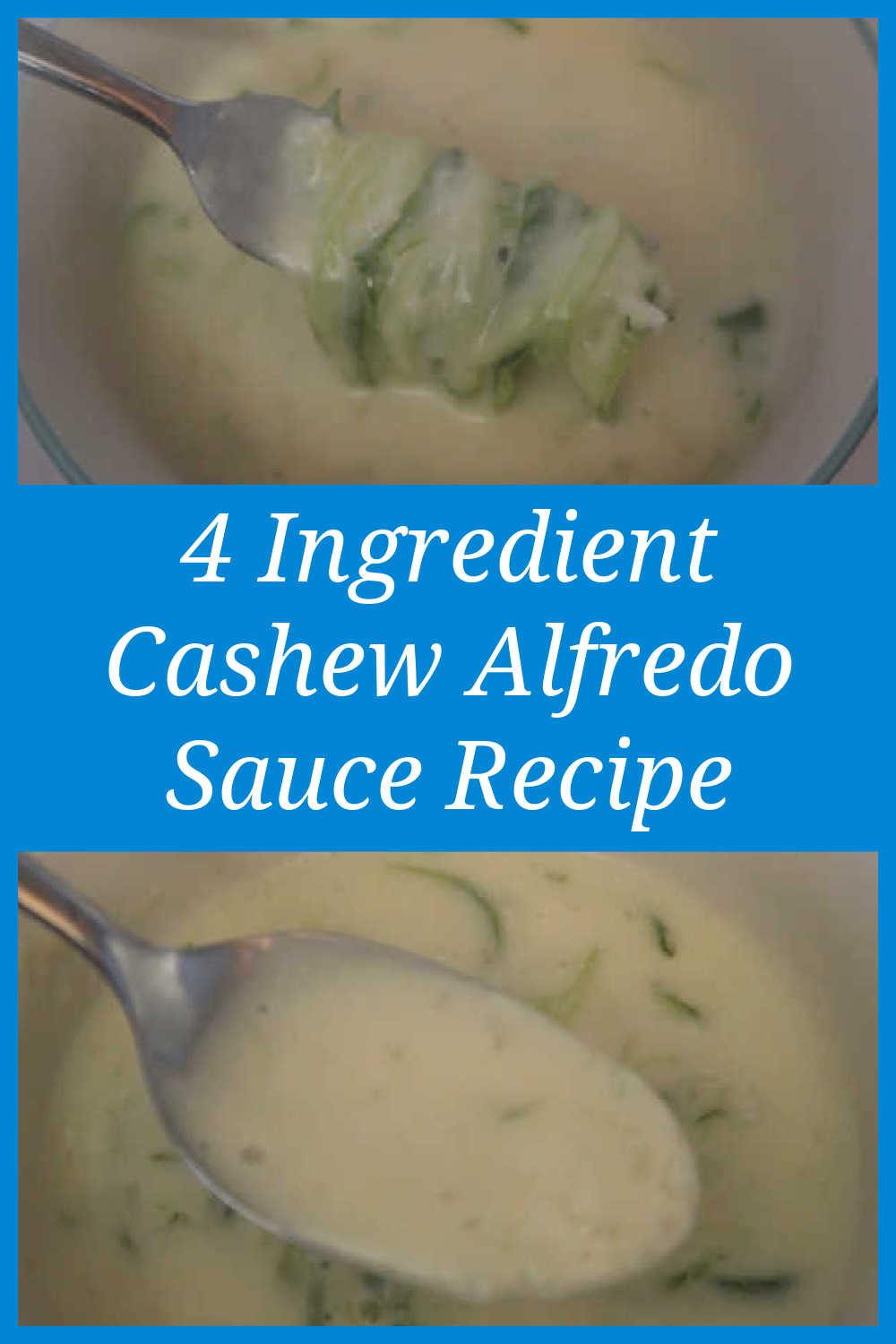
Creamy Alfredo Sauce Video Tutorial
Here’s the video where you can watch the homemade alfredo sauce being prepared, step by step. Hit play below or click here to watch on YouTube.
More Easy Comfort Food Recipes
Cheesy Green Bean Casserole
Low Carb Vegan Cauliflower Mash
Vegetarian Mushroom Stroganoff
Cashew Alfredo Sauce Recipe

Cashew Alfredo Sauce Recipe – How to make the best easy, creamy garlic sauce that can be vegan, paleo, keto and dairy free friendly – with video.
Ingredients
- 1 Cup Cashew Milk
- 1-3 Garlic Cloves, peeled and crushed
- Salt & Pepper, to taste
- 1-2 Cups Grated Cheese or a dairy free/vegan alternative
Instructions
- Make homemade cashew milk, if using, or measure out a cup of cashew milk for use in the recipe.
- Heat olive oil, coconut oil or vegan butter in a large pot on the stove top over medium-high heat, when hot add in the crushed garlic.
- Saute for a minute or two to become fragrant, then pour over the cashew milk, salt and pepper, to taste.
- Bring up to the boil, then reduce to a simmer, add the cheese and cook until the cheese has melted and sauce has thickened to your liking.
- Serve with your favorite pasta, vegetables or zucchini noodles.
Nutrition Information:
Amount Per Serving: Calories: 85
Disclosure – this post contains affiliate links.
The post Cashew Alfredo Sauce Recipe appeared first on Yummy Inspirations.
By: Jolene @ Yummy InspirationsTitle: Cashew Alfredo Sauce Recipe
Sourced From: yummyinspirations.net/2022/01/cashew-alfredo-sauce-recipe/
Published Date: Wed, 12 Jan 2022 13:54:06 +0000
Frequently Asked Questions
What is an Organic Food Producer?
Organic food producers create products that are grown without pesticides and chemical fertilizers. These foods include fruits as well vegetables, grains and dairy products.
When crops are naturally nurtured, organic food production can be achieved. This includes soil preparation, pest controls, and crop rotation.
Organic products must meet certain criteria established by USDA (United States Department of Agriculture) before they can be considered organic.
These guidelines make it possible for consumers to have safe, healthy, and delicious food.
Organic foods offer many health benefits. They are free from heavy metal contamination and pesticide residues. They also have higher nutritional content and better taste.
USDA organic products must carry the USDA Certified Organic seal.
This certification means the product has met the standards of the National Organic Program.
Organic food is not only healthier for us, but also protects our environment.
Organic farming techniques help preserve natural resources such as water and land. Organic methods also reduce greenhouse gas emissions that can cause climate change.
Organic agriculture is more sustainable and uses less chemicals.
This improves the air quality by reducing the likelihood of harmful gases like ammonia, nitrates and other pollutants building up in your atmosphere.
There are many forms of organic farming.
Conventional agriculture refers to the use synthetic inputs, such as pesticides/fertilizers.
Regenerative farming is the use of compost, cover crops, or green manures to improve soil health. It encourages biodiversity.
Agroecology emphasizes sustainable relationships between people and plants.
Permaculture promotes self sufficiency through the creation of systems that imitate nature.
Are there health benefits to eating organic food?
While organic foods may not be suitable for everyone's health, they are healthy for some people. For those who consume them regularly, however, they can offer certain health benefits.
Organic food is grown without the use of pesticides herbicides fungicides hormones antibiotics or genetic engineering. Organic produce is free from harmful chemicals that could cause harm to human health.
There are also fewer additives used during processing. Organic products are likely to be healthier than nonorganic.
Studies have shown that organic fruits and vegetables contain more nutrients than those grown conventionally.
While organic farming is more expensive than traditional farming, it often produces better results. Organic farming encourages soil fertility and biodiversity.
This helps prevent erosion and conserve water. Plus, because organic farms aren't treated with toxic chemicals, these farms typically require less energy and fuel.
People worry that organic foods will be more expensive than those made from conventional food. Prices will vary depending where you live. For example, organic apples can be more costly than conventional apples.
But, if we look at the total cost of a combination of both types and fruits, we'll see organic is much cheaper.
So, should you buy organic?
It depends on what kind of person you are. If organic food doesn't appeal to you, you shouldn't bother.
Organic food is available if you are a fan of good food. Organic foods are safer than conventional food because they don't contain chemical pesticides or fertilizers.
Organic agriculture protects our environment by conserving natural resources and promoting biodiversity.
Is organic a guarantee that the product is pesticide-free
Organic food is naturally chemical-free and grows without pesticides. This means that organic foods are not subject to chemical pesticides or fertilizers.
Organic produce also contains more nutrients than conventionally produced foods because it contains no harmful additives.
The USDA National Organic Program, (NOP), requires farmers to adhere to strict guidelines when cultivating organic crops.
These guidelines cover soil preparation, crop rotation and pest control. They also include water conservation and harvesting techniques.
In addition, organic farming methods promote healthy ecosystems, which benefit wildlife and natural habitats.
What are some organic skin products?
Organic skincare products are free from synthetic chemicals, such as parabens and phthalates, petroleum jelly, mineral oil, petroleum jelly, propylene glycol, sodium laurylsulphate. Talc, triclosan. titanium dioxide. triethanolamine. Vitamin A palmitate.
Organic skincare products are also free of artificial colours, fragrances, preservatives, emulsifiers, GMOs, petrochemicals, animal testing (except cosmetics tested on animals), pesticides, hormones, antibiotics, heavy metals, and other contaminants.
They also help to preserve healthy skin and prevent premature aging.
Here are some common terms you might encounter when searching for organic products
- Paraben Free- These are chemicals that help to keep certain cosmetics stable. But, they can also be toxic if taken in large quantities.
- Fragrance-Free: The product is free of essential oils or fragrances.
- Cruelty-Free - No animals were harmed during the manufacturing process.
- Natural Ingredients - The ingredient is derived naturally from the animal or plant.
- Vegetarian/Vegetarian- The ingredients are either vegan/vegetarian.
- Gluten-Free means that the formulation was free of gluten.
- Non-Toxic-The product doesn't contain any toxic chemicals, carcinogens, and/or other harmful substances that could be harmful to your health.
- Biodegradable means that the product can be thrown away as it will become harmless components.
- Pesticide-Free – No pesticides were used in the growing or harvesting of crops.
- GMO-Free is a declaration that the product does not contain genetically modified organisms.
- Certified Organic refers to ingredients that were grown using methods that protect soil, water, air, wildlife and farmers.
Statistics
- Once certified by the USDA, it can fall into one of four categories: "100 percent organic", "organic," "made with organic ingredients," or "made with less than 70 percent organic ingredients. (en.wikipedia.org)
- Cosmetic brands such as Laurel and Rose Mira are 100 percent organic and have a wide array of skincare products. (en.wikipedia.org)
- Nutrients like omega-3 fatty acids were up to 50 percent higher in organic meats and milk than in conventionally raised products.[3] (en.wikipedia.org)
- To provide the highest quality products and services to every customer, with a dedicated workforce that puts the customer first and takes the extra step to achieve 100% customer satisfaction and loyalty. (hollinsorganic.com)
External Links
ecfr.gov
ewg.org
- EWG's 2022 Shopper’s Guide to pesticides in produce
- Clean Fifteen(tm), Conventional Produce With the Least Pesticides
sciencedirect.com
- Organic food and its impact on human well-being: ScienceDirect assesses the status quo as well as future research prospects
- Technical note: Simultaneous Vitamin and Carotenoid Analysis of Milk from Total Mixed Ratio-Fed Cows - ScienceDirect
ota.com
How To
5 Reasons to buy organic products
Organic foods are grown without pesticides and synthetic fertilizers. They contain no genetically modified organisms (GMOs) or irradiated ingredients. Their production processes do not include sewage or industrial solvents. During the course of its growth cycle, the natural environment of the food is protected from contamination. It is free from artificial additives and preservatives. There is no use of antibiotics or hormones. They are also produced in conditions that preserve their nutritional value and freshness over longer periods.
- Health benefits. Nonorganic produce has more chemicals than organic. Organic produce is healthier. This makes it less likely to cause allergies or sensitivities. This also means that you are consuming less toxins and carcinogens.
- Eco-friendliness. Produce grown without pesticides and synthetic fertilizer requires very little water. Because conventional farming requires so much energy, organic farms are usually located far from places where pollution is high. This helps to reduce the amount of air pollution.
- Sustainability. Organic farming relies more on soil fertility than chemical fertilizers. This results is healthier soils with higher organic matter. Soil health improves when farmers rotate crops and leave land fallow periodically. When farm animals eat only grasses and grains raised without any added hormones or antibiotics, they develop strong immune systems.
- Taste. The taste of conventional fruits and veggies is often bland. This is because they are picked at the peak of ripeness. They then get shipped long distances to their destination. Organic produce is sweeter and richer because it was harvested at the peak of its ripeness.
- Nutrition. GMOs, BPA, and other harmful chemicals are often found in conventional processed foods. Avoid these harmful chemicals by eating whole foods, such as meat, eggs and fish, seeds, legumes, fruits, vegetables, herbs, and beans.
Did you miss our previous article...
https://belovedsaffron.com/recipes/french-toast
.png)





